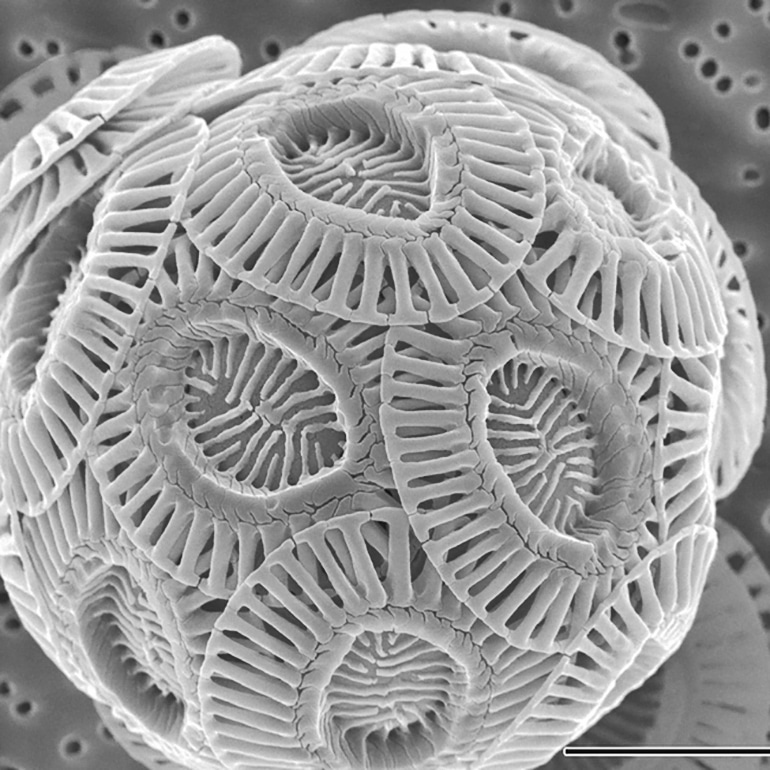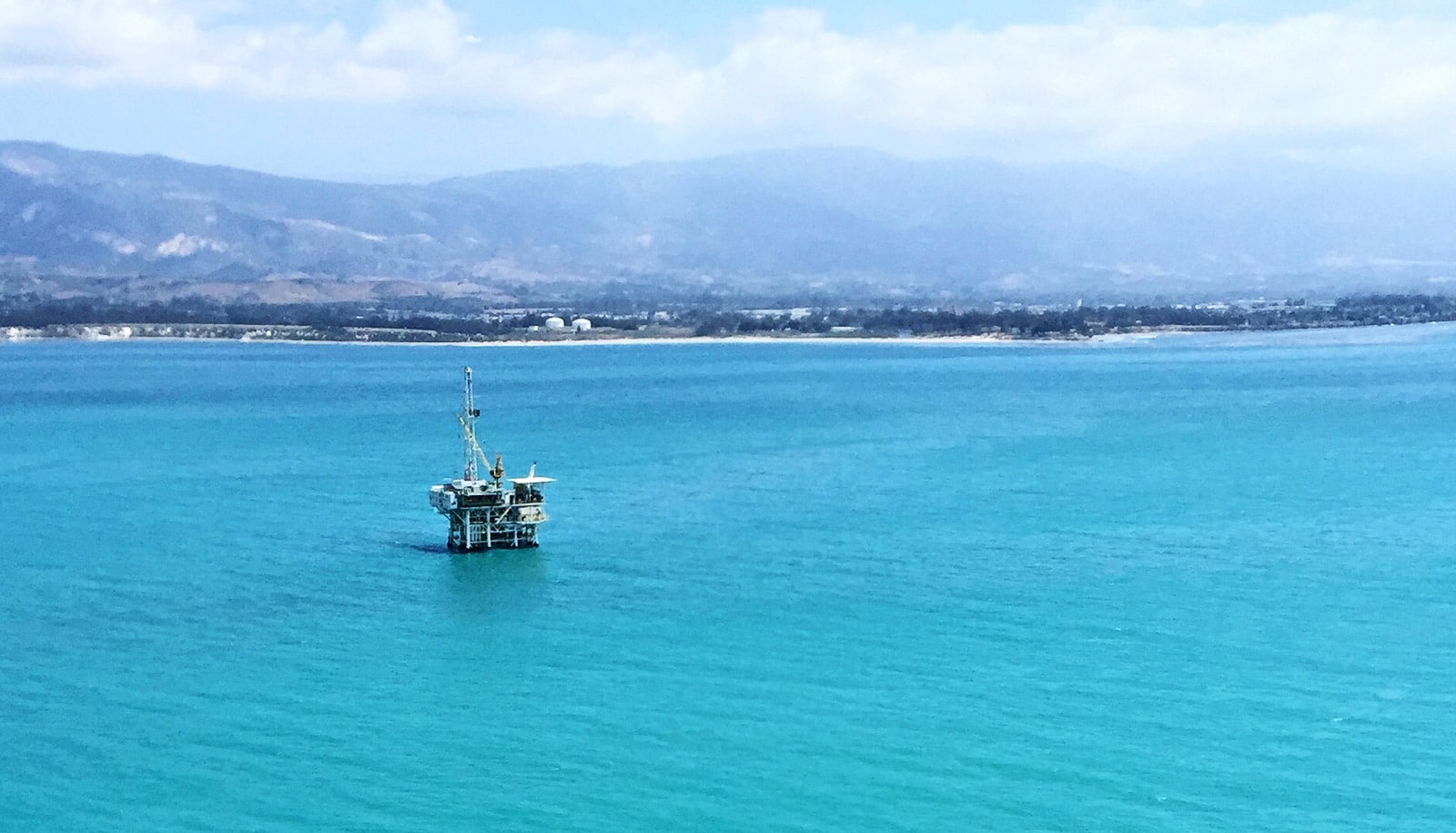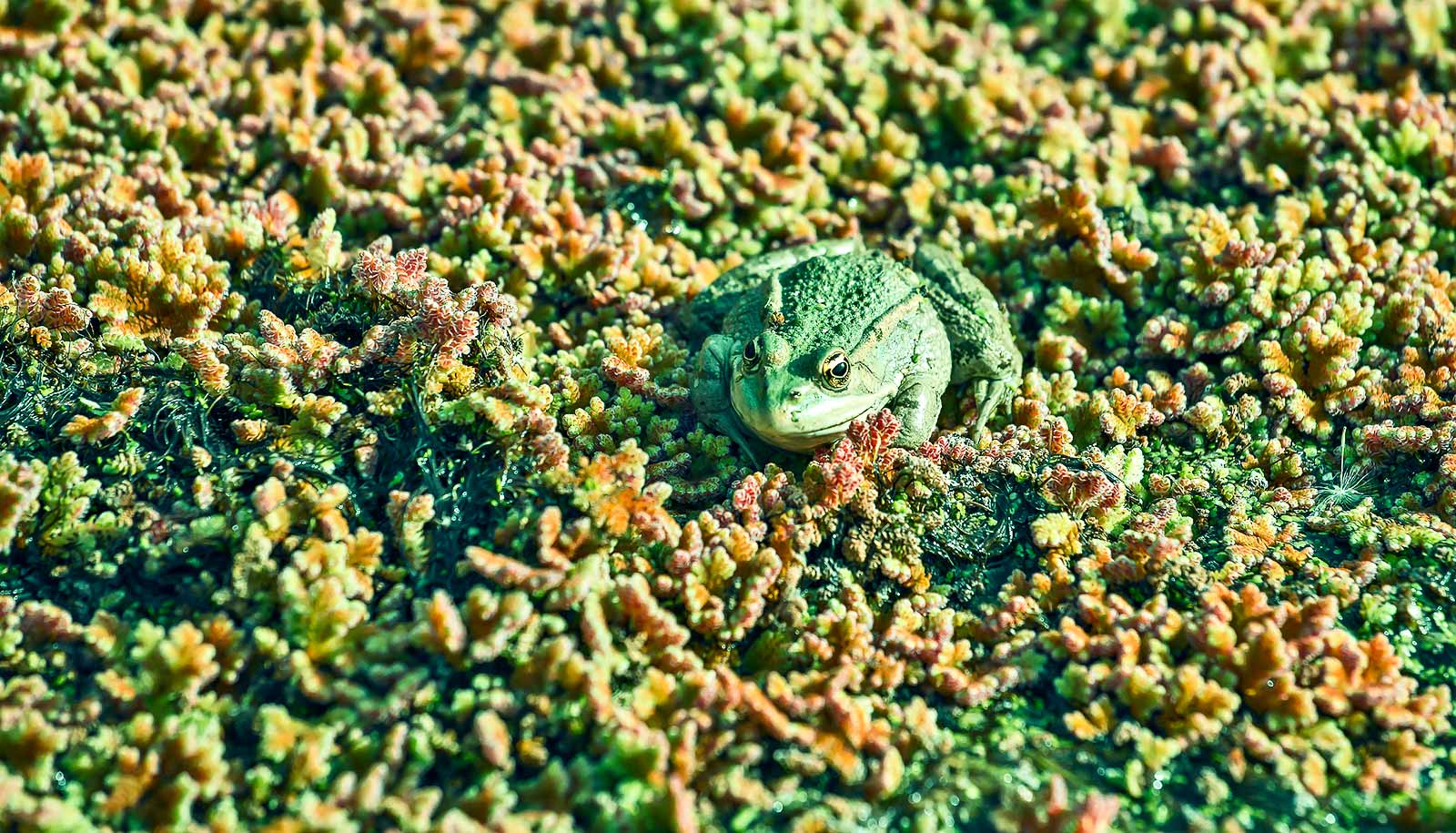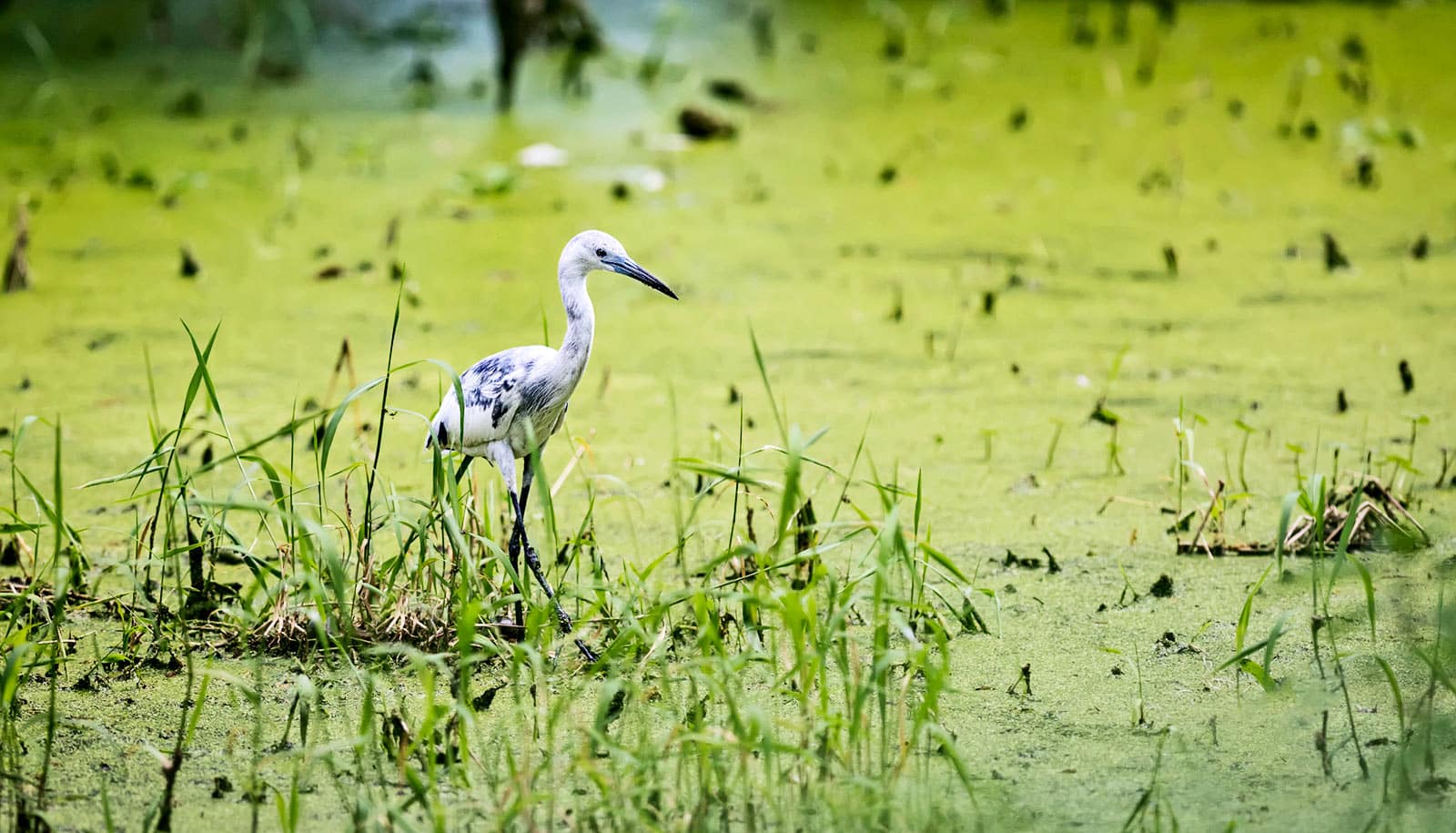In June 2015, the unusual blue-green hue of the water off of Santa Barbara, California had scientists scratching their heads. Now they know it stemmed from an algae bloom.
“When the water off the coast of California starts to look like you’re in the Caribbean, that’s really weird,” says lead study author Paul Matson, a former postdoctoral scholar with Debora Iglesias-Rodriguez, a professor in the ecology, evolution, and marine biology department at the University of California, Santa Barbara.
The similarity, however, was only superficial. Blooms like this tend to happen at higher latitudes, he notes, while the Caribbean owes its aquamarine hue to other factors.
The color off the California coast that summer came from coccolithophores, a group of single-celled algae similar to diatoms. But where diatoms coat themselves in silica, tiny plates of calcium carbonate cover coccolithophores. They shed these plates, which scatter light as they drift in the water, giving the ocean a milky, turquoise hue.
The specific coccolithophore species the scientists found—Emiliania huxleyi (affectionately called E. hux)—occurs everywhere, but blooms like this are rare in mid-latitude regions like the Santa Barbara Channel. So the team began to piece together what triggered the bloom.

‘Strange things were happening’
This was an odd time for the West Coast. A large region of abnormally warm water, nicknamed “the Blob,” set into the northeast Pacific in autumn of 2013 and persisted well into 2016 with patches periodically traveling down the California current. The ocean then transitioned from these warm water conditions into the 2015 El Niño event, which extended the unusual temperatures.
“We had this extended period of time when we had extremely warm waters. We had low nutrient availability, and just strange things were happening,” Matson says.
E. hux tend to live just offshore, and although they’re efficient when nutrients are scarce, the small algae are often outcompeted when conditions are more favorable. Before the E. hux bloom, the California coast saw a major bloom of the often-toxic diatom, Pseudo-nitzschia. When the diatoms had used up the dissolved silica, conditions became ripe for coccolithophores, which aren’t constrained by the limited silica. Fueled by the nutrients released by the decaying diatoms, the E. hux population exploded.
Seen from space
Matson first wanted to document the bloom, so he collected samples to test water chemistry, see the density of plankton, identify species, and track biomass. What’s more, the team could calculate the age of the bloom by the ratio of loose plates floating in the water to the number of actual cells. The group could also estimate how much calcium carbonate was still present in the water.
These blooms can cover large swathes of ocean; astronauts on the International Space Station report seeing them from space. Wanting to track the extent of this particular bloom from above as it developed, Matson collaborated with David Siegel, an oceanographer who works on ocean color remote sensing via satellite images.
Remote-sensing images provided snapshots of the bloom, generally once per day. Geography professor Libe Washburn’s research group at the university’s Marine Science Institute, which uses radar arrays to study surface currents, filled in the gaps.
The Southern California Coastal Ocean Observing System runs the network, which covers the Santa Barbara Channel. The team combined the satellite images with hourly maps of surface currents to create a simulation that connected points in one day’s satellite image to those in the following day’s image.
Bloom tracker
Researchers believe this is one of the first studies to combine surface current observations and satellite images to quantify changes in an ongoing phytoplankton bloom. Field sampling confirmed the presence of E. hux and the loose plates floating in the water. This, in turn, validated the researchers’ understanding of how the bloom developed based on the surface current and remote sensing results.
It’s difficult to study the early phase of bloom formation because scientists typically detect a bloom only after it’s well developed. But using surface current tracking, the team could identify areas where they suspected the presence of coccolithophores, but not yet at densities high enough that satellites could see them. Matson suspected they might be pre-bloom populations.
“That’s going to be where the new bloom comes from,” he says, “so we can look back and try to figure out what was going on in those areas that could have contributed to the bloom occurring.”
The researchers’ technique will work for other types of blooms as well, Matson says. “Our hope is that this approach can be used for studying other types of phytoplankton, like Pseudo-nitzschia, an important species of harmful algal blooms.”
This would be a welcome tool, as tracking these blooms would help predict where there may be risks for human and animal health.
Matson also highlights the team’s good fortune regarding where the bloom occurred: at the confluence of three long-term monitoring projects.
“It happened to occur in a place that we were actively monitoring, where we had a lot of baseline data to actually be able to pick apart a very novel event like this coccolithophore bloom. If this had happened in an area where we didn’t have those resources, we would not have been able to do something this interesting.”
The study appears in the Journal of Geophysical Research: Oceans.
Source: UC Santa Barbara



